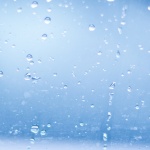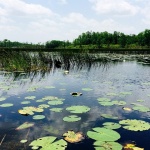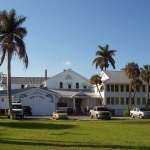Southwest Florida has seemingly endless coastlines, a wonderfully warm climate and impressive fisheries. It is without a doubt the Fishing Capital of the World. The cream of the crop of this fishing paradise is south of Chokoloskee Island in the Ten Thousand Islands section of Everglades National Park. The area is rich in angling opportunities, diversity of experience and has a deep history.
This is perhaps the fly fisherman’s paradise since artificial fishermen and live baiters alike can fish the waters very effectively. The “head waters” are crystal clear, though always slightly brown from the tannic acid released by the mangroves. This provides excellent sight-fishing opportunities.
The rivers are littered with small mangrove islands and feeder creeks that are havens for fish, for example the local populations of small tarpon. The moving water creates deep holes and at the same time creates sand and mud flats. There are many oyster bars that serve as shelters for crabs and there’s shrimp and small fishes that go up and down the river.
North of Chokoloskee lay the many rivers that give life to the eco system as well as fishing opportunities to many. There are many unnamed creeks as well that are large enough to hold tarpon, snook, redfish, grouper and more. It doesn’t matter if you go by this river or that tributary. There more fishing spots that you try in a day, the more excellent your chances for a good catch is going to be.
The rivers from the north connect to large bays surrounded by thousands of little islands. Each river provides great opportunity for fishing its respective cuts, oyster bars, mangrove overhangs and rips. The islands themselves form enormous passageways that tidal waters flow through. These passageways bore holes that are sometimes over 20 feet deep. The smaller of the groupers, the largest of the black drum, the cobia and the tasty Spanish mackerel move into these passageways in the cooler months. As the season warms up, large numbers of large tarpon, the massive goliath groupers, and the biggest of the snook show up. Jack, snapper, pompano, trout and ladyfish are a found almost year-round.
The south rivers are supplied by the backcountry. This is a vast flooded area of bayous, bights, saltwater bays, and islands. Some of these are parts of the Wilderness Waterway, a marked boating trail that’s supervised by Everglades National Park. The course runs for 99 miles all the way to Flamingo.
To the north, higher in the backcountry, above the bays, are offshoot creeks from the mainland. Here you can catch a snook, redfish a large mouth bass all with relative ease.
The south river mouths are marked by huge oyster bars and passageways that cut through even larger grass and mud flats. This amasses a huge number of fish and wildlife if the time is right. This means if fishing the mouths, it is common to be amongst hundreds of wading birds, alligators, manatee, eagles, dolphin, and osprey. You will even see pigs, deer, bears, and cats on the beaches.










